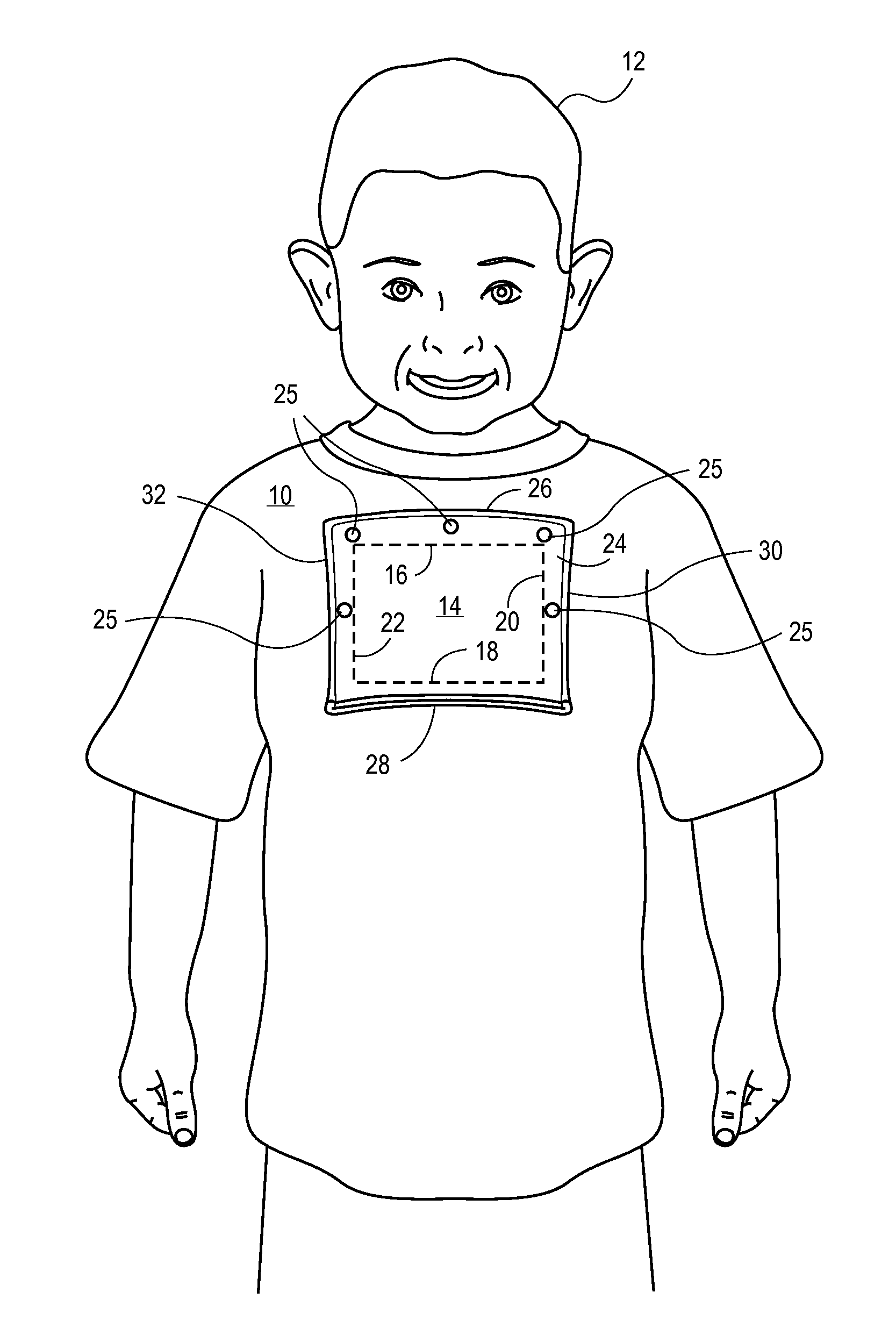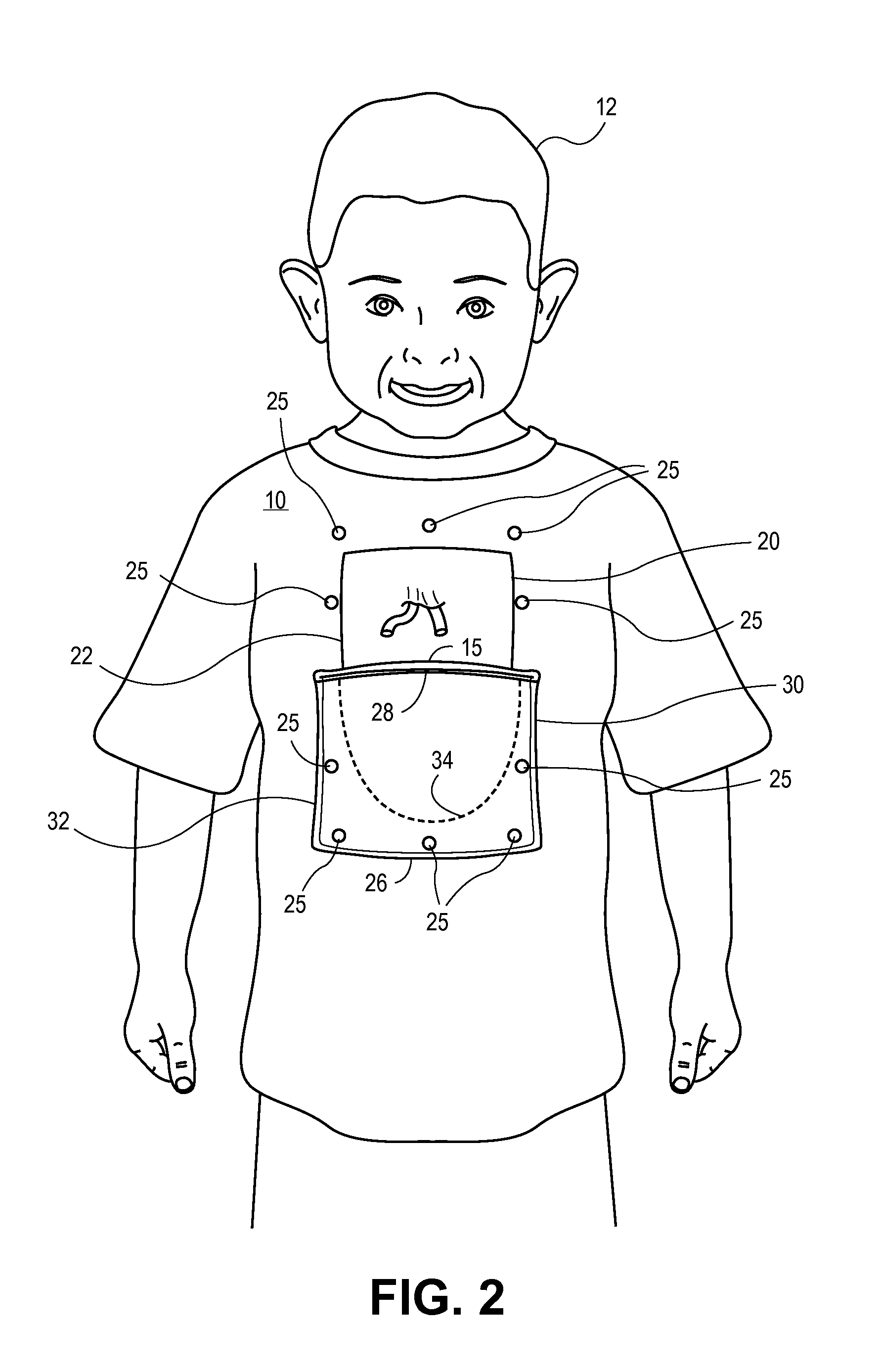Medical Garment and Method
a technology for medical garments and children, applied in the field of medical garments, can solve the problems of difficult and discomfort for caregivers and patients, physical discomfort and emotional difficulty, and the general unsuitability of normal children's clothing for treatment, and achieve the effect of easy detachmen
- Summary
- Abstract
- Description
- Claims
- Application Information
AI Technical Summary
Benefits of technology
Problems solved by technology
Method used
Image
Examples
Embodiment Construction
[0013]The drawings are for the purpose of illustrating a preferred embodiment of a medical garment embodying the principles of the present invention only and are not for purposes of limiting the same.
[0014]The preferred embodiment of the medical garment is shown in the shape of a t-shirt. It should be understood, however, that alternative embodiments of the present invention may be in the form of any torso-covering garment having a front, a back, and two sides with arm holes. For example, alternative embodiments of the garment may be in the shape of a shirt, a dress, a sweatshirt, a jacket or any other garment which covers the torso of the patient.
[0015]FIGS. 1 and 2 are front side perspective views of a preferred embodiment of the medical garment 10 being worn by a child patient 12. The garment 10 is made of a flexible material, preferably of woven cloth or fiber, but may alternatively be made of sheet plastic, vinyl or other flexible material used for clothing. The garment 10 cove...
PUM
 Login to View More
Login to View More Abstract
Description
Claims
Application Information
 Login to View More
Login to View More - R&D
- Intellectual Property
- Life Sciences
- Materials
- Tech Scout
- Unparalleled Data Quality
- Higher Quality Content
- 60% Fewer Hallucinations
Browse by: Latest US Patents, China's latest patents, Technical Efficacy Thesaurus, Application Domain, Technology Topic, Popular Technical Reports.
© 2025 PatSnap. All rights reserved.Legal|Privacy policy|Modern Slavery Act Transparency Statement|Sitemap|About US| Contact US: help@patsnap.com



